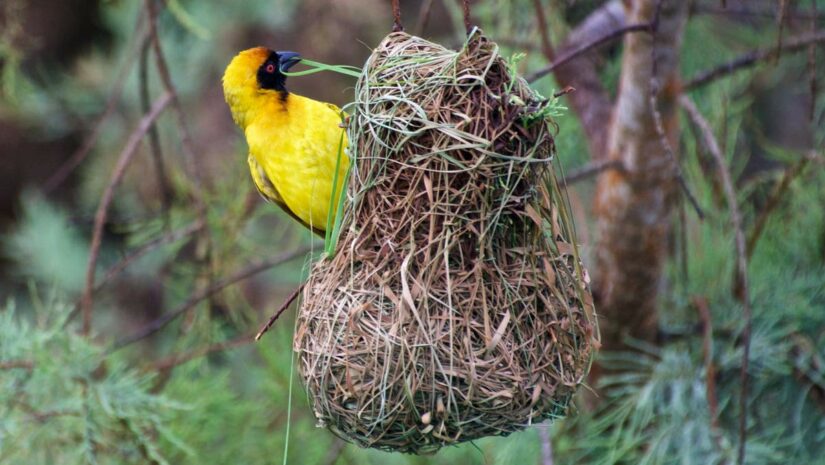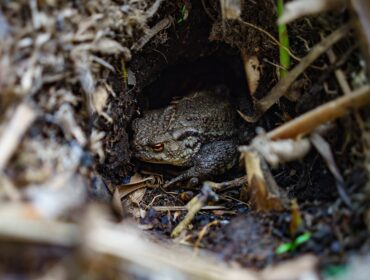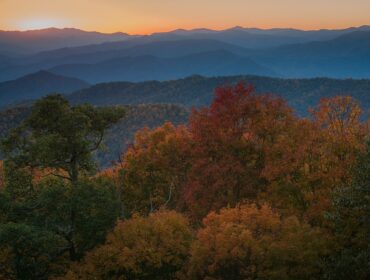Happening upon a bird’s nest when exploring the outdoors is always an exciting discovery, even if there’s nothing in it. Birds are some of the most resourceful animals when it comes to building the homes that they will share with their offspring, and the variety of methods they employ is impressive. Here are several common types of homes birds build, and where they are likely to be found. However, you should avoid disturbing a nest that you find in the wild if at all possible, get a good look, and leave the rest to nature.
1. Scrape
A scrape is a type of nest that is little more than a depression in the ground, created by the bird in one of two ways: scraping the ground with its feet or beak, or lying on the ground and rocking back and forth. If the scrape is lined at all, it will typically be sparse, and may include bits of shells, grass, or feathers. The eggs of birds that build scrape nests have markings that will help camouflage them, since a slight hollow in the ground doesn’t provide much protection from predators. Seagulls, terns, falcons, quail, and ducks are all birds that build scrapes.
2. Pendant
Like a work of art, the pendant nest is a dangling abode in the sky. These carefully crafted structures are the result of tireless gathering and weaving, usually made from long blades of grass and other plant fibers. The nest is suspended from a tree branch, where orioles, sunbirds, weavers, and Oropendolas will tend to future generations.
3. Platform
Platform nests are most commonly used by large birds of prey, like ospreys, eagles, and hawks. A platform nest will typically be built on a structure high above the ground, such as a tall tree or light post, but there are some species that build their platforms on the ground. Raptors will often use a platform nest continuously for many years, adding bits of fodder to it during each breeding season.
4. Cup
The cup nest is the most commonly found type of bird nest, which many species of small birds construct, including hummingbirds, robins, and swifts. They are generally comprised of pliable materials like grasses, twigs, hair, and feathers, but a few cunning species are known to use a high amount of spider silk in the construction of the cup nest. The size and density of the cup nest depends primarily upon the size of the bird that will be incubating the eggs inside it.
5. Burrow
The species of birds that burrow into earth to lay their eggs ranges from parakeets to penguins to kingfishers to owls. While most burrowing birds will dig their own nest, there are a few opportunistic species that will use the abandoned burrows of other terrestrial animals, like tortoises, badgers, and prairie dogs. Some birds will personally tend to the eggs, while others choose a location for their burrow where there will be warmth from sunlight or decaying organic material.
6. Mound
The mound nest is essentially a giant compost heap that the parent birds construct from soil, grass, twigs, leaves, and other organic materials in which the eggs will be buried and incubated until they hatch. The compact nature of the mounds combined with the heat generated by decomposition is sufficient to see the eggs through the entire process, with no need for the parent bird to be present. Flamingos, Australian Brushturkey, and the Horned Coot are all builders of the mound nest.
7. Spherical
The spherical nest is similar to the pendant nest in that they are constructed in the same way with many of the same materials. The only real way in which they differ is ultimately their shape, with the spherical nest being more squat and round than the elongated shape of the pendant nest. The entire nest is enclosed, save for a small opening that the parent bird will be able to fit through. Small birds are the most common designers of these charming little nests.
Related to How to identify bird nests: Top 3 Birdwatching Destinations in the US, 3 Best Places for Birdwatching in the Southern US, 5 Endangered Birds of North America
Featured Image from Fabiana Rizzi/Unsplash




